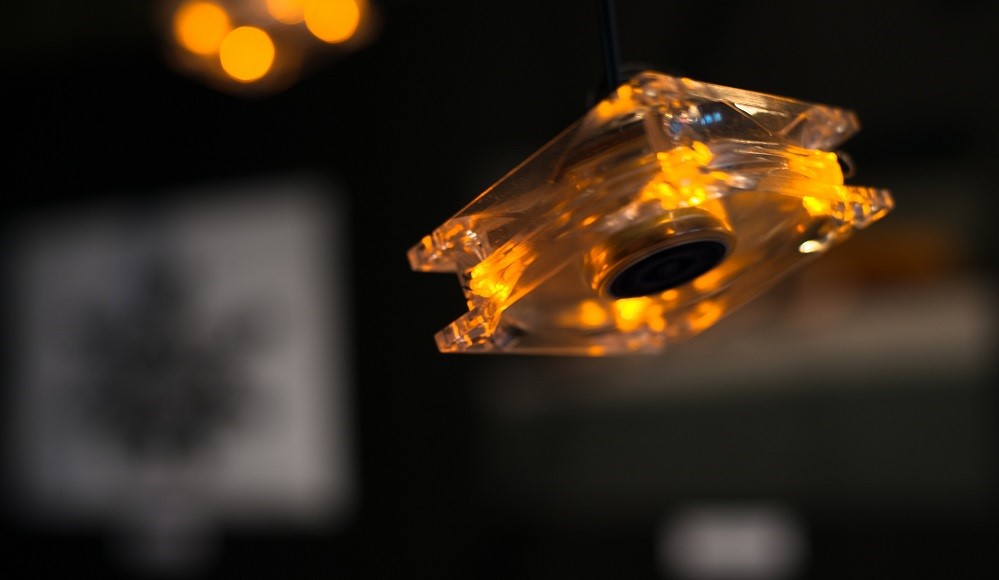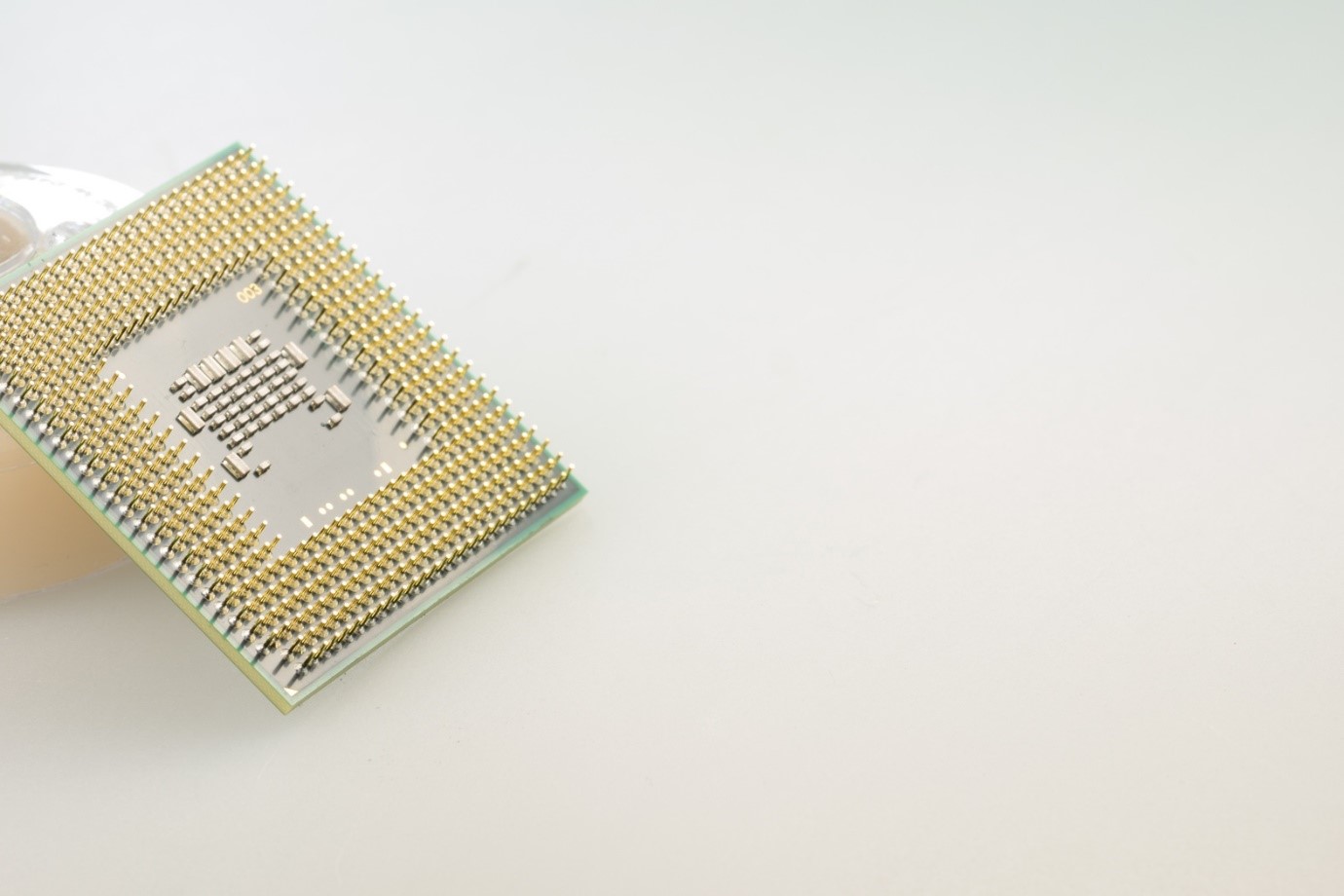Cool the CPU in the data center - laser 3D printing will help
The University of Binghamton (New York) has developed a new technology for cooling processors, which will allow to abandon the thermal paste. Thermally conductive material is applied directly to the surface of the chip using 3D printing. According to experts, their solution can lower the operating temperature of processors in data centers by 10 ° C.
We will talk about technology and talk about other experimental methods of CPU cooling.

/ photo artistic bokeh CC BY-SA
')
The developers of the technology applied a thin layer of a metal alloy with a high thermal conductivity to the processor chip and using the laser “printed” channels for the coolant in it. For this, the method of selective laser sintering was used .
A layer of metal powder is evenly distributed on the silicon surface. Then the laser is turned on and the beam, guided by moving mirrors, fuses the particles together according to the generated 3D model. The procedure is repeated many times - at each iteration, different cuts of the final product are formed. The laser sintering itself takes less than a second.
The alloy that is applied to the chip consists of titanium, tin, and silver. The last two are needed to reduce the melting point of the material. Thus, the metal remains in the liquid state longer, which helps to avoid deformation of the layer due to rapid solidification.
Selective laser sintering made it possible to form a metallic layer one thousand times thick less than the diameter of a human hair. This allows the coolant to take the excess heat directly from the chip and eliminates the need for thermal grease.
The specialists managed to obtain an alloy with a thermal conductivity of 39 W / (m • K), which is seven times better than that of other materials for thermal interfaces - thermal paste or polymer compounds. This allowed the chip temperature to be reduced by 10 ° C, compared to other cooling systems.
So far, the technology has been tested only in the laboratory and it is not known how it will work in real data centers. However, in the near future, researchers plan to patent their technology and conduct the necessary tests.
Not only at Binghamton University are working on chip cooling technology. Their colleagues from the University of California for the first time synthesized ultrapure boron arsenide crystals with high thermal conductivity. The value obtained is close to 1300 W / (m • K), while for diamond (which is considered one of the record breakers in thermal conductivity), it is 1000 W / (m • K).
The new technology will create efficient heat removal systems in electronics and photonics. However, for this you need to solve a number of problems. Boron arsenide is difficult to obtain on an industrial scale - defects are often generated during the synthesis of crystals, and toxic arsenic compounds are used in the production of the material.
Researchers at the University of California are also working to solve the problem of heat dissipation from processors. They proposed to change the structure of the chip itself. The idea is to create a silicon crystal structure in which phonons (quasiparticles that transfer heat) will transfer heat at maximum speed.
Their technology is called "perforated silicon." The board drilled tiny holes with a diameter of 20 nm, which accelerate heat dissipation. In the case of the optimal location of the holes, the thermal conductivity of the silicon wafer increases by 30%.
This method is still far from implementation - only the model is ready. The next step is to explore the potential of technology and the possibility of application in real systems.

/ photo PxHere PD
Prior to the practical implementation of new technologies of heat dissipation is far away. All of them are either at the concept stage or at the prototyping stage. Although they have good potential, it’s not yet possible to talk about their widespread introduction in the data center market.
For this reason, data centers are now experimenting with other methods of cooling. One of the latest trends is liquid cooling . According to the Uptime Institute survey, 14% of data centers worldwide have already implemented the technology. Experts expect that in the future this figure will increase due to the increase in the density of equipment in the data center. As with a large number of nearby servers, air cooling is difficult.
Another trend is AI systems for controlling data center air conditioning systems . According to research organizations, about 15–25% of the data center already use such machine learning algorithms. And it is expected that in the future, the popularity of intelligent technologies in the data center will only increase.
PS Materials from our corporate blog:
PS We have a Telegram channel where we write about virtualization technologies and IaaS:
We will talk about technology and talk about other experimental methods of CPU cooling.

/ photo artistic bokeh CC BY-SA
')
How to print "metal thermal grease"
The developers of the technology applied a thin layer of a metal alloy with a high thermal conductivity to the processor chip and using the laser “printed” channels for the coolant in it. For this, the method of selective laser sintering was used .
A layer of metal powder is evenly distributed on the silicon surface. Then the laser is turned on and the beam, guided by moving mirrors, fuses the particles together according to the generated 3D model. The procedure is repeated many times - at each iteration, different cuts of the final product are formed. The laser sintering itself takes less than a second.
The alloy that is applied to the chip consists of titanium, tin, and silver. The last two are needed to reduce the melting point of the material. Thus, the metal remains in the liquid state longer, which helps to avoid deformation of the layer due to rapid solidification.
Selective laser sintering made it possible to form a metallic layer one thousand times thick less than the diameter of a human hair. This allows the coolant to take the excess heat directly from the chip and eliminates the need for thermal grease.
What can this technology
The specialists managed to obtain an alloy with a thermal conductivity of 39 W / (m • K), which is seven times better than that of other materials for thermal interfaces - thermal paste or polymer compounds. This allowed the chip temperature to be reduced by 10 ° C, compared to other cooling systems.
The new technology is designed to solve two problems: reduce the cost of electricity in data centers and extend the life of the processors (as they will be less overheated). According to the developers, the invention will reduce the energy consumption of the world's data centers by 5% and allow the IT industry to save up to $ 438 million annually.
So far, the technology has been tested only in the laboratory and it is not known how it will work in real data centers. However, in the near future, researchers plan to patent their technology and conduct the necessary tests.
Who else is experimenting with chip cooling
Not only at Binghamton University are working on chip cooling technology. Their colleagues from the University of California for the first time synthesized ultrapure boron arsenide crystals with high thermal conductivity. The value obtained is close to 1300 W / (m • K), while for diamond (which is considered one of the record breakers in thermal conductivity), it is 1000 W / (m • K).
The new technology will create efficient heat removal systems in electronics and photonics. However, for this you need to solve a number of problems. Boron arsenide is difficult to obtain on an industrial scale - defects are often generated during the synthesis of crystals, and toxic arsenic compounds are used in the production of the material.
Researchers at the University of California are also working to solve the problem of heat dissipation from processors. They proposed to change the structure of the chip itself. The idea is to create a silicon crystal structure in which phonons (quasiparticles that transfer heat) will transfer heat at maximum speed.
Their technology is called "perforated silicon." The board drilled tiny holes with a diameter of 20 nm, which accelerate heat dissipation. In the case of the optimal location of the holes, the thermal conductivity of the silicon wafer increases by 30%.
This method is still far from implementation - only the model is ready. The next step is to explore the potential of technology and the possibility of application in real systems.

/ photo PxHere PD
What's next
Prior to the practical implementation of new technologies of heat dissipation is far away. All of them are either at the concept stage or at the prototyping stage. Although they have good potential, it’s not yet possible to talk about their widespread introduction in the data center market.
For this reason, data centers are now experimenting with other methods of cooling. One of the latest trends is liquid cooling . According to the Uptime Institute survey, 14% of data centers worldwide have already implemented the technology. Experts expect that in the future this figure will increase due to the increase in the density of equipment in the data center. As with a large number of nearby servers, air cooling is difficult.
Another trend is AI systems for controlling data center air conditioning systems . According to research organizations, about 15–25% of the data center already use such machine learning algorithms. And it is expected that in the future, the popularity of intelligent technologies in the data center will only increase.
PS Materials from our corporate blog:
- Unboxing: Cisco UCS B480 M5 Blade Server
- Servers for SAP: Basic Platforms
- Unboxing all-flash storage NetApp AFF A300: technical specifications
PS We have a Telegram channel where we write about virtualization technologies and IaaS:
Source: https://habr.com/ru/post/432136/
All Articles